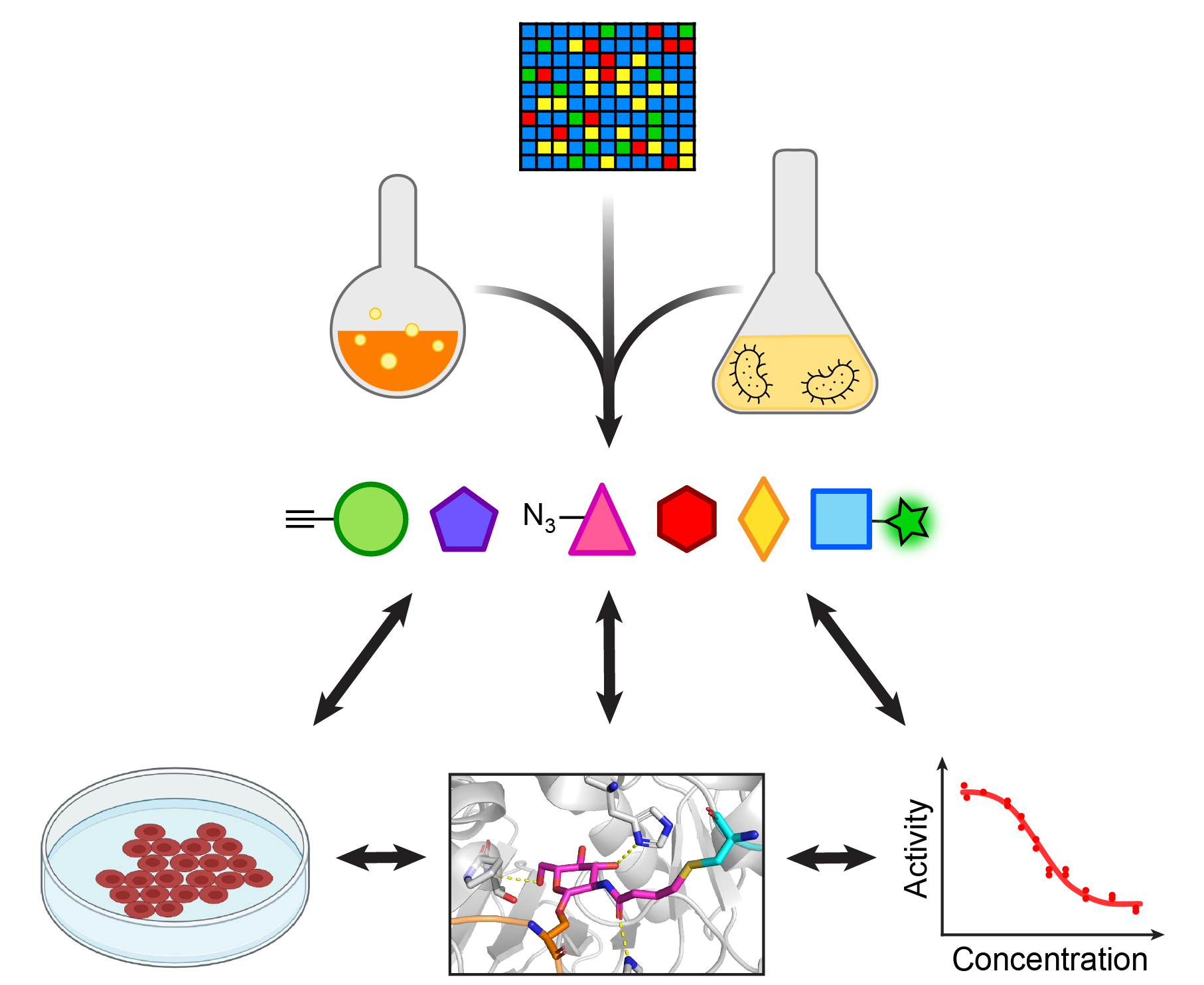
Dissecting the complex landscape of O-GlcNAcylation requires a robust and versatile toolbox. Our group is focused on developing new chemical tools to decode O-GlcNAc biology. We recently developed a class of conceptually novel chemical probes (termed GlcNAc Electrophilic Probes or GEPs) that can rapidly discriminate between altered OGT binding affinity toward sugar donor and protein acceptor substrates. Using a click-chemistry-based fluorescent assay, these probes can efficiently identify key residues of OGT in protein substrate recognition, a significant challenge in the field (see Selected Publication #1 & #2 below). Moreover, we developed a GEP that can crosslink OGT with protein substrates in situ during sugar transfer, affording a unique method to enrich and identify genuine substrates that transiently or weakly interact with OGT. As a method of specific inhibiting OGT through its unique non-catalytic residue, we have also developed a new covalent inhibitor that targets OGT with high efficiency in cells (see Selected Publication #3 below). Development of next generation probes that integrate new functionalities or allow for specific targeting of OGT and OGA will prove to be invaluable for future studies of O-GlcNAcylation. Our work will continue to produce intellectually novel chemical tools that expand the capabilities of this exciting field.
Selected Publications
- Kositzke A#, Fan D#, Wang A, Li H, Worth M, Jiang J*. Elucidating the protein substrate recognition of O-GlcNAc transferase (OGT) toward O-GlcNAcase (OGA) using a GlcNAc electrophilic probe. International Journal of Biological Macromolecules. 2020 Dec 18;169:51-59. doi: 10.1016/j.ijbiomac.2020.12.078. Online ahead of print. (#equal contribution)

- Hu CW#, Worth M#, Fan D#, Li B#, Li H#, Lu L, Zhong X, Lin Z, Wei L, Ge Y, Li L, Jiang J*. Electrophilic probes for deciphering substrate recognition by O-GlcNAc transferase. Nature Chemical Biology (2017) 13, 1267-73. (#equal contribution)

- Worth M#, Hu CW#, Li H, Fan D, Estevez A, Zhu D, Wang A, Jiang J*. Targeted covalent inhibition of O-GlcNAc transferase in cells. Chemical Communications (2019) 55, 13291-4. (#equal contribution)
